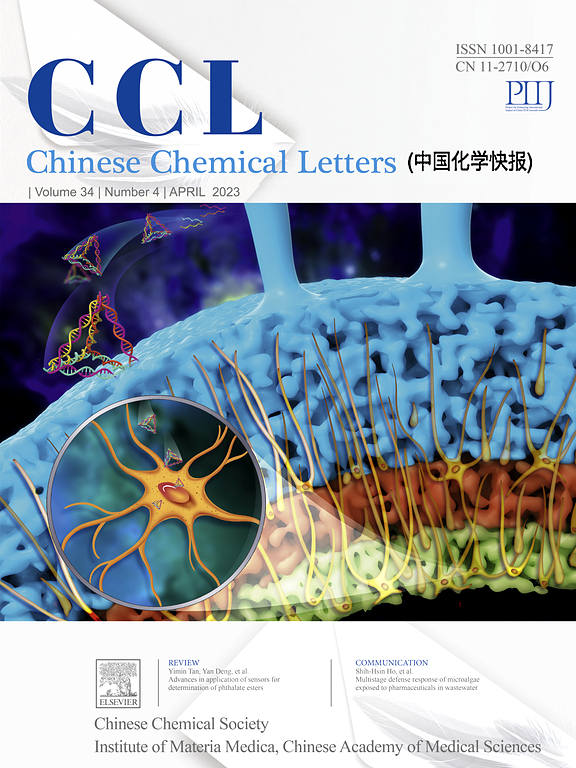Transdermal delivery of amphotericin B using deep eutectic solvents for antifungal therapy
IF 9.4
1区 化学
Q1 CHEMISTRY, MULTIDISCIPLINARY
引用次数: 0
Abstract
Candida albicans is one of the most common pathogens causing invasive fungal infections, with a mortality rate of up to 20 %–50 %. Amphotericin B (AmB), a biopharmaceutics classification system (BCS) IV drug, significantly inhibits Candida albicans. AmB is primarily administered via oral and intravenous infusion, but severe infusion adverse effects, nephrotoxicity, and potential hepatotoxicity limit its clinical application. Deep eutectic solvents (DESs), with excellent solubilization ability and skin permeability, are attractive for transdermal delivery. Herein, we used DESs to deliver AmB for antifungal therapy transdermally. We first prepared and characterized DESs with different stoichiometric ratios of choline (Ch) and geranate (Ge). DESs increased the solubility of AmB by a thousand-fold. In vitro and in vivo, skin permeation studies indicated that DES1:2 (Ch and Ge in 1:2 ratio) had the most outstanding penetration and delivered fluorescence dye to the dermis layer. Then, DES1:2-AmB was prepared and in vitro antifungal tests demonstrated that DES1:2-AmB had superior antifungal effects compared to AmB and DES1:2. Furthermore, DES1:2-AmB was skin-irritating and biocompatible. In conclusion, DES-AmB provides a new and effective therapeutic solution for fungal infections.

求助全文
约1分钟内获得全文
求助全文
来源期刊

Chinese Chemical Letters
化学-化学综合
CiteScore
14.10
自引率
15.40%
发文量
8969
审稿时长
1.6 months
期刊介绍:
Chinese Chemical Letters (CCL) (ISSN 1001-8417) was founded in July 1990. The journal publishes preliminary accounts in the whole field of chemistry, including inorganic chemistry, organic chemistry, analytical chemistry, physical chemistry, polymer chemistry, applied chemistry, etc.Chinese Chemical Letters does not accept articles previously published or scheduled to be published. To verify originality, your article may be checked by the originality detection service CrossCheck.
 求助内容:
求助内容: 应助结果提醒方式:
应助结果提醒方式:


